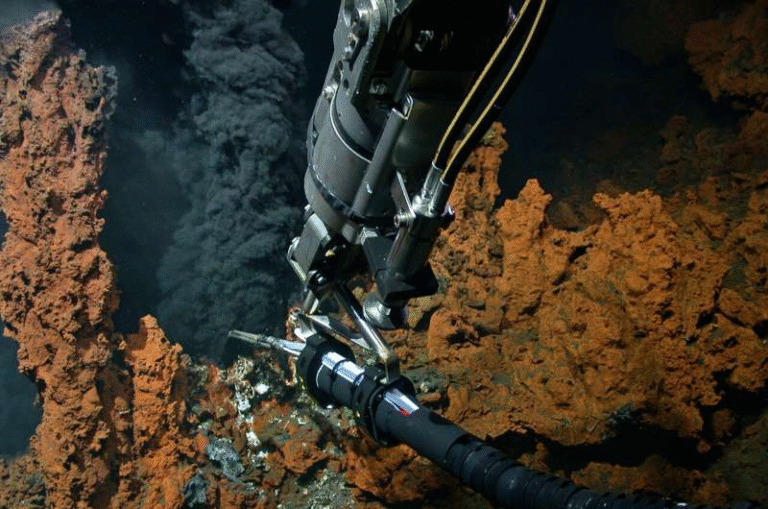Emission Cuts Before Mid-Century Could Prevent 0.6 Meters of Future Sea-Level Rise

A major new study published in Nature Climate Change reveals that emissions cuts made before 2050 could prevent up to 0.6 meters of sea-level rise that would otherwise be locked in for centuries. Conducted by researchers at the International Institute for Applied Systems Analysis (IIASA) along with scientists from the UK, Belgium, the Netherlands, and Germany, this study highlights how today’s climate policies will shape coastlines not just for our lifetimes, but for generations to come.
The Study at a Glance
The research, titled “Multi-century global and regional sea-level rise commitments from cumulative greenhouse gas emissions in the coming decades,” focuses on a question that has often been overlooked: how much sea-level rise is already inevitable based on the emissions we release in the next few decades?
To find out, the scientists modeled various emissions scenarios using advanced Earth system models. Their goal was to isolate how different timeframes of greenhouse gas emissions—say, stopping at 2050 vs continuing to 2090—would impact sea-level rise by the year 2300. This approach goes far beyond the usual projections that stop at 2100, which tend to miss the long-term effects of slow-responding systems like oceans and ice sheets.
Key Findings
- Even near-term emissions have long-term consequences.
If humanity continues along current policy trajectories, emissions released between 2020 and 2050 would already commit the planet to roughly 0.3 meters of extra sea-level rise by 2300. - Emissions through 2090 lock in much more.
Extending those emissions to 2090 would “lock in” about 0.8 meters of additional global sea-level rise by 2300—nearly three times more than if emissions were halted at mid-century. - Mitigation still makes a big difference.
The good news is that around 0.6 meters of that future sea-level rise could still be avoided if the world rapidly reduces emissions in line with the Paris Agreement targets. In simpler terms, cutting emissions before 2050 could prevent more than half a meter of ocean rise that would otherwise reshape coastlines across the world. - Regional differences matter.
The study also found that sea-level rise will not be uniform. Some regions—particularly Pacific Island nations and parts of the Indian Ocean—could experience about 10% higher rise than the global average. This means a global increase of 0.8 meters could translate to nearly 0.9 meters locally, posing severe challenges for small island nations and densely populated coastal areas.
Why This Study Stands Out
Most sea-level projections stop at the year 2100, but the planet doesn’t stop responding when the calendar flips. Oceans and ice sheets continue reacting to changes in temperature for centuries. That’s because of their enormous thermal and physical inertia—once the system warms, it takes an incredibly long time to cool down again.
This study is unique because it directly links emissions in specific decades to long-term sea-level commitments, showing policymakers and citizens how decisions made in the next 25 years will still be shaping coastlines in the year 2300.
What “Locked-In” Sea-Level Rise Means
When scientists say sea-level rise is “locked in,” they mean it’s committed—even if emissions stopped immediately, the processes already set in motion would continue to drive rising seas for centuries. This happens because:
- Oceans absorb heat slowly and expand as they warm, a process known as thermal expansion.
- Ice sheets and glaciers melt over long timescales, and even a slight increase in temperature can cause persistent ice loss.
- Feedback effects in ice dynamics and ocean circulation can continue unfolding long after emissions end.
So, the emissions we produce between now and 2050 aren’t just about short-term temperature rise—they’re about centuries of coastal transformation.
The Real-World Impact
A difference of 0.6 meters may not sound catastrophic at first, but it has enormous implications. A half-meter of additional sea-level rise could:
- Displace tens of millions of people from low-lying coastal areas.
- Accelerate coastal erosion and saltwater intrusion into freshwater sources.
- Threaten ecosystems such as mangroves, coral reefs, and wetlands that buffer against storm surges.
- Endanger major cities like Mumbai, Kolkata, Jakarta, New York, and Lagos, which already face frequent flooding events.
In short, even small differences in sea-level rise translate to massive long-term adaptation costs and habitat losses.
How the Study Was Done
The researchers used climate emulators, simplified versions of full Earth system models that can efficiently simulate temperature, sea-level, and ice-sheet responses to emissions. They created scenarios where emissions stopped in different decades (e.g., 2030, 2050, 2090) and analyzed how much global and regional sea-level rise would occur by 2300.
By comparing these scenarios, they could pinpoint how much sea-level rise each decade of emissions “locks in.” This method revealed a clear, direct link between near-term emission decisions and multi-century sea-level outcomes.
The Legacy of Our Choices
The researchers emphasize that the world is still at a crossroads. Continuing on the current path commits future generations to centuries of higher seas, while rapid decarbonization could significantly limit the legacy of our emissions.
Coastal adaptation—such as sea walls, elevated infrastructure, and managed retreat—will still be necessary, but early mitigation keeps those adaptation challenges within manageable limits. If emissions remain high through this century, many adaptation limits will be surpassed, forcing populations in low-lying areas to relocate entirely.
Additional Context: The Science of Sea-Level Rise
Thermal Expansion
When water warms, it expands. Even if ice didn’t melt at all, the heat absorbed by the oceans would still raise global sea levels. This process is slow but relentless—about half of the observed sea-level rise since 1900 comes from thermal expansion.
Melting Ice Sheets
The Greenland and Antarctic ice sheets are the largest potential contributors to future sea-level rise. Once melting begins at a large scale, it becomes difficult to reverse. Ice flow dynamics, such as marine ice-sheet instability, can lead to tipping points where the process accelerates.
Glaciers and Mountain Ice
Smaller glaciers, though they hold less total ice than the polar sheets, are more sensitive to temperature change. Their retreat adds directly to sea-level rise and affects freshwater supply for millions of people.
Land Subsidence and Regional Effects
Local sea-level changes vary due to land subsidence, gravitational effects, and ocean currents. For example, melting ice in Greenland slightly reduces its gravitational pull on nearby water, causing higher rises elsewhere. These complex factors mean regional planning must rely on localized projections, not just the global mean.
Why This Matters for the Next Century
While 2300 might sound distant, the groundwork is being laid now. Policy decisions in the 2020s–2040s will determine whether future generations inherit coastlines similar to today’s or ones dramatically reshaped by permanent flooding.
Even under optimistic climate scenarios, some rise is inevitable—but how much more depends entirely on what we do now. The study makes one thing clear: every decade counts, and the time for strong climate action is before mid-century, not after.





